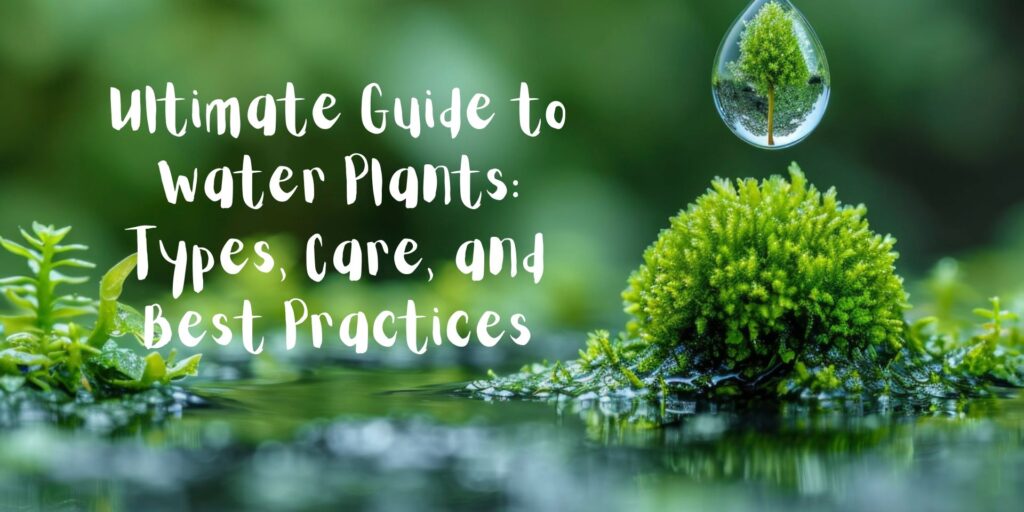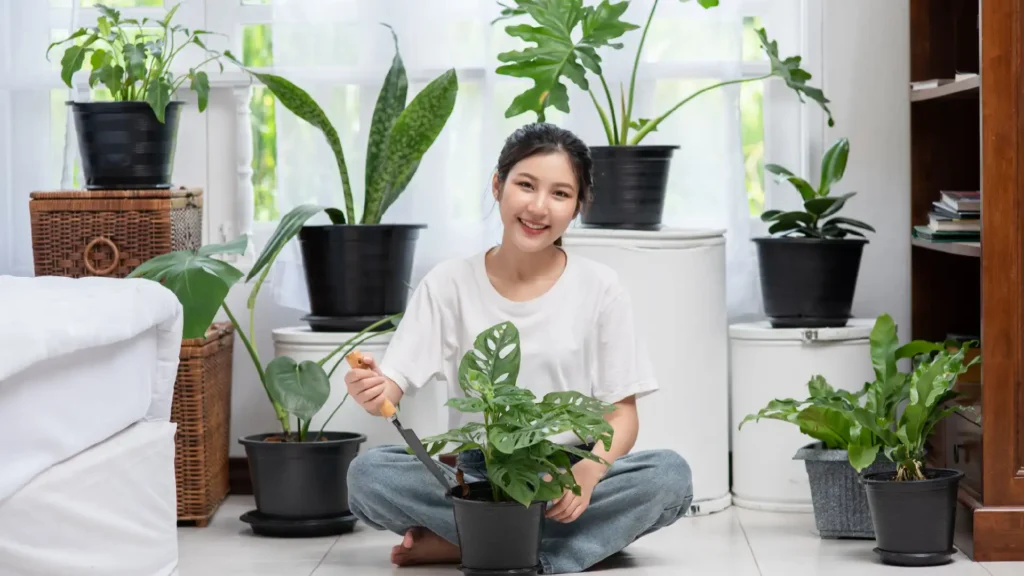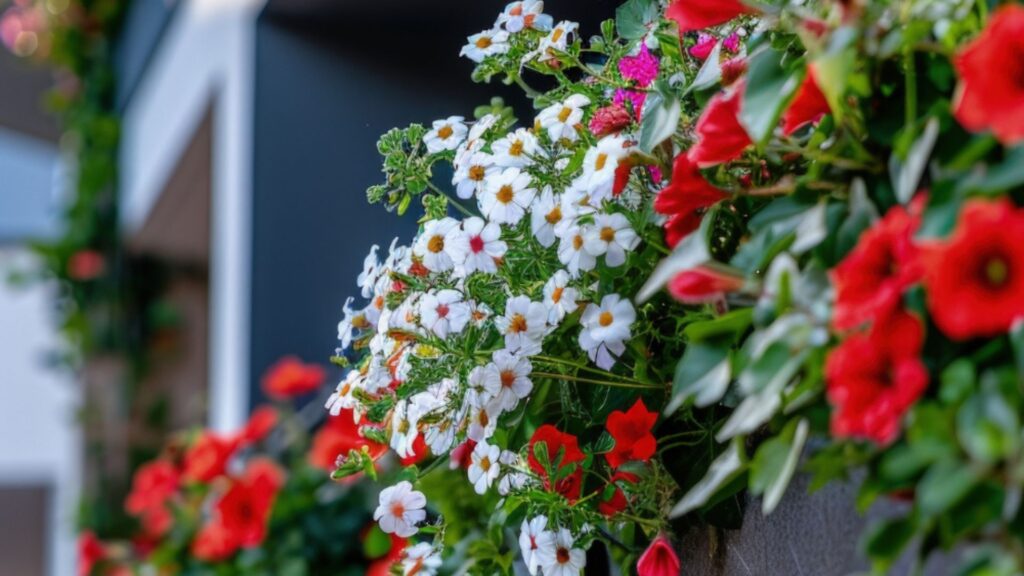Water plants, also known as aquatic plants, are essential for various environments, including indoor gardens, aquariums, and outdoor ponds. Not only do they enhance the aesthetic appeal of these spaces, but they also contribute to the ecological balance. This guide covers everything you need to know about water plants, from the best types to grow to expert tips on caring for them.
1. Understanding Water Plants
Water plants are diverse in nature, ranging from those that thrive submerged in water to those that float on the surface. They are classified into three main categories: submerged, floating, and emergent. Each type serves a unique purpose and has specific requirements.
2. 10 Water Plants You Should Know About
If you’re considering adding water plants to your space, here are 10 water plants you should consider:
- Water Lilies (Nymphaeaceae): Known for their vibrant flowers and broad leaves, water lilies are a popular choice for ponds. They provide shade and reduce algae growth.
- Lotus (Nelumbo nucifera): A sacred symbol in many cultures, the lotus is a stunning plant that thrives in shallow water. It requires ample sunlight and can grow in outdoor ponds.
- Duckweed (Lemnoideae): This tiny, floating plant is excellent for aquariums and ponds. Duckweed is fast-growing and helps absorb excess nutrients from the water.
- Hornwort (Ceratophyllum demersum): A submerged plant ideal for aquariums, hornwort provides oxygen and creates a natural habitat for fish.
- Anubias (Anubias barteri): Perfect for beginners, Anubias is a hardy plant that can grow in low light. It’s commonly used in aquariums due to its resilience.
- Java Moss (Taxiphyllum barbieri): Java Moss is a versatile plant that can be attached to rocks or driftwood. It’s a great choice for aquascaping and provides cover for small aquatic creatures.
- Amazon Sword (Echinodorus amazonicus): This popular aquarium plant is known for its large, sword-shaped leaves. It requires moderate light and a nutrient-rich substrate.
- Water Hyacinth (Eichhornia crassipes): A floating plant with beautiful purple flowers, water hyacinth is often used in outdoor ponds to reduce algae growth.
- Cattails (Typha): Commonly found in wetlands, cattails are emergent plants with tall, narrow leaves. They help filter water and provide habitat for wildlife.
- Pennywort (Hydrocotyle verticillata): A creeping plant that grows both in water and on land, pennywort is ideal for adding greenery to aquariums and ponds.
3. Water Plants Names List with Pictures
Having a visual reference can be incredibly helpful when choosing water plants for your space. Here’s a water plants names list with pictures to help you identify and select the right plants:
| Water Lilies |  |
| Lotus |  |
| Duckweed |  |
| Hornwort |  |
| Anubias |  |
| Java Moss |  |
| Amazon Sword |  |
| Water Hyacinth |  |
| Cat tails |  |
| Pennywort |  |
Including images in your blog post will enhance user experience and improve engagement, making it easier for readers to visualize and identify the plants.
4. Water Plants Indoor: Creating an Aquatic Paradise
Water plants aren’t just for ponds and aquariums—they can also thrive indoors, creating a unique and tranquil environment. Here are some tips for growing water plants indoor:
- Choose the Right Plants: Some water plants are better suited for indoor conditions. Consider plants like Anubias, Java Moss, and Amazon Sword, which can thrive in low light and don’t require extensive care.
- Use Containers: For indoor water plants, containers are essential. You can use glass bowls, vases, or aquariums. Ensure the containers are clean and have a stable base.
- Lighting: While some water plants can survive in low light, others may require artificial lighting. Use LED grow lights to provide the necessary light spectrum for your plants.
- Water Quality: Indoor water plants require clean, dechlorinated water. Regularly check the water’s pH level and change it as needed to prevent algae growth.
- Humidity: Water plants indoor can increase the humidity in your home, creating a more comfortable environment, especially during dry seasons.
5. Floating Water Plants Indoor: A Unique Decor Element
Floating water plants add a touch of elegance to indoor spaces. Unlike submerged plants, they float on the water’s surface, creating a visually appealing display. Some popular floating water plants indoor include:
- Duckweed: As mentioned earlier, duckweed is easy to maintain and can quickly cover the water’s surface.
- Water Hyacinth: While often used outdoors, water hyacinth can also be grown indoors in larger containers. Its flowers add a pop of color to any room.
- Frogbit (Limnobium laevigatum): Frogbit is a small, floating plant with round leaves. It’s ideal for aquariums and small water gardens.
- Water Lettuce (Pistia stratiotes): Known for its rosette of leaves, water lettuce is a popular choice for indoor water gardens. It requires ample sunlight to thrive.
6. Aquatic Water Plants Indoor: Bringing Nature Inside
Aquatic water plants indoor not only enhance the beauty of your space but also contribute to a healthier indoor environment. These plants can improve air quality and create a calming atmosphere. Here’s how to get started:
- Select the Right Aquatic Plants: Start with easy-to-care-for plants like Anubias, Java Fern, and Amazon Sword. These plants are hardy and can adapt to indoor conditions.
- Aquascaping: Create a natural-looking underwater landscape in your aquarium or water container. Use rocks, driftwood, and sand to mimic the natural environment of the plants.
- Maintenance: Regularly trim and prune your aquatic water plants to prevent them from overgrowing. This will keep your indoor water garden looking neat and healthy.
7. Water Plants for Aquarium: Enhancing Your Aquascape
Adding water plants to your aquarium not only improves its aesthetic appeal but also provides numerous benefits for the aquatic life inside. Here are some tips for choosing water plants for aquarium:
- Consider the Size of Your Aquarium: Choose plants that are appropriate for the size of your aquarium. Large plants like Amazon Sword are ideal for bigger tanks, while smaller plants like Java Moss are perfect for nano tanks.
- Create a Balanced Ecosystem: Water plants help create a balanced ecosystem in your aquarium by providing oxygen, absorbing waste, and offering hiding spots for fish.
- Plant Placement: Place taller plants at the back of the aquarium and shorter ones at the front to create depth and dimension.
- Lighting and CO2: Some aquarium plants require specific lighting and CO2 levels to thrive. Research the needs of each plant and adjust your setup accordingly.
8. The Best Time to Water Plants: Timing is Key
Knowing the best time to water plants is crucial for their health and growth. Here’s a guide to help you water your plants effectively:
- Morning Watering: The best time to water plants is in the early morning. The cool temperatures allow the water to soak into the soil without evaporating too quickly. Morning watering also prepares plants for the heat of the day.
- Evening Watering: While it’s generally not recommended to water plants in the evening, it’s better than watering during the hottest part of the day. If you must water in the evening, do it early enough so the water can be absorbed before nightfall.
- Worst Time to Water Plants: Avoid watering plants during the midday heat, as the water will evaporate quickly, and the plants won’t have enough time to absorb it. This can lead to water stress and damage the plants.
9. Can We Water Plants at Night? Pros and Cons
Watering plants at night is a debated topic among gardeners. While some believe it’s fine, others advise against it. Here’s what you need to know:
- Pros: Watering at night reduces water loss due to evaporation. It can be beneficial in hot climates where water conservation is essential.
- Cons: Watering at night can lead to fungal growth and other diseases, as the plants remain wet for an extended period. It’s best to avoid night watering unless absolutely necessary.
10. How to Water Plants When on Vacation: Keep Your Plants Alive
Going on vacation doesn’t mean your plants have to suffer. Here are some tips on how to water plants when on vacation:
- Self-Watering Systems: Invest in self-watering systems or use water spikes to ensure your plants get the moisture they need while you’re away.
- Watering Globes: These are glass bulbs that slowly release water into the soil. They’re an easy and effective way to keep your plants hydrated.
- Ask a Neighbor: If you have a trusted neighbor or friend, ask them to water your plants while you’re away. Provide clear instructions to avoid over or under-watering.
- Group Plants Together: Place your plants in a shaded area and group them together. This will create a microenvironment that retains moisture and reduces the need for frequent watering.



